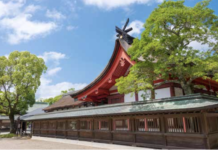
Every relationship with Jakarta is a love-hate one. Well, it is not called the “Big Durian” for nothing
Original text: Renata Sherly, with input from Chriswan Sungkono
Those visiting the city for a day or two might easily be turned off by the “bad rep” around it. For a megalopolis accommodating more than 12 million people, Jakarta’s pollution is nothing short of stupefying. Its traffic jams are relentless and diabolical enough to merit suicidal thoughts. When in season, the floods are of biblical proportions. Though its expatriates brag about the degree of decadence they can afford to wallow in here, in the same breath they whine about its poor, nearly-nonexistent public services.
All that, I promise you, is but the city’s thorny husk and malodorous stench. Jakarta can be a real pain and off-putting on many days, but allow me, a born-and-bred Jakartan – and devoted durian lover – to peel the Big Durian, delve underneath its rough skin and reveal how delightful Jakarta can be.
Living here for three decades, I’ve seen how Jakarta’s features have evolved with the changing times, opening itself up to whomever is willing to call it home. I am not a true-blood Betawi, but no one needs to possess such pedigree to feel emotionally attached to this city – and especially to its home-grown cuisine, which over time not only has been wedded to the influences of the Arabs, Indians, Chinese and Europeans (particularly the Dutch), but has also produced numerous offspring, each just as scrumptious as the last.
Instrumental in Jakarta’s culinary intermarriage is the illustrious area of Glodok in the heart of Old Jakarta (“Kota”), ever bustling with people trading a vast array of goods – from electronics and building materials to pirated DVDs and snake oil. Born out of a ghettoised Chinese community in the colonial era and transformed into one of Asia’ s biggest Chinatowns, Glodok has been replete with superb foods for at least two centuries. Most eateries quote no-nonsense prices, unembellished with regards to service and comfort, so if eating for the food’s sake is what you’re after, this is the place to go.

A Cantonese-style lunch at Siauw A Tjiap on Jalan Pancoran is usually in order whenever I find myself shopping in Glodok’s furious heat. First opened in 1923, Siauw A Tjiap is among the most successful in the city’s annals of Chinese restaurants – even now, when most of its peers have moved up the ladder in establishment size and pricing.
During off-hours, a steaming claypot of pork congee at Bubur Kamseng on Jalan Mangga Besar (open 24 hours) never fails to nourish. Not far away, you’ll find the legendary fishcake of Otak-Otak Binatu. En route to my high school, I used to walk past the shop and witness the staff unloading a truckload of coconuts to make their unrivalled concoction of es kelapa muda, a refreshingly sweet drink I personally find more nostalgia-inducing than their rather pricey fishcakes.
As a child, a trip to Glodok with my mother would always involve a visit to one of the three bakeries that dot the Gajah Mada–Hayam Wuruk thoroughfare to this day. I would go home smiling, clutching a bag of Suisse Bakery’s choc-bursting sweetbread – or the garlic and cheese breads from Delicious. At other times, my mother would let me admire the Dutch-style windmill perched atop Holland Bakery and pick tartlets and choc rum balls from the display cabinet.
But for my birthdays, it had to be a lavishly decorated cake from Sakura Anpan, an even more old-school bakery on Jalan Sabang. With modern bakeries mushrooming in the past decade along this road known for its fantastic (street) food scene – Sabang 16 and The Baked Goods on the corner being the best of the lot – I find it heartening to see old establishments still holding their own against the new. Many though, clearly, having past their heyday, have called it quits.

The story of Ibu Endang provides an exemplary case of survival in the restaurant business. Following the closing of her eponymous Javanese restaurant in Cipete, which had garnered praise for its soulful cooking over the years, Ibu Endang’s passion in the kitchen is now renascent in a more contemporary setup, where she acts as the culinary creator. Located in a shopping mall in South Jakarta, Remboelan serves largely classic street fare from all around Indonesia (think gado-gado, nasi langgi and opor ayam) with a more urbane edge.Closer to where I live, in Karet area, the gritty gourmand in me never runs out of options for satiating both paunch and palate. If I can make it early enough, I love the noodle and meatballs soup from Bakso Paul on Jalan Tiong for brunch. Come after 11am, and you’ll end up biting your nails. In that case, I’ll have Pak Selamet of J alan Komando Raya serve me his generous, clear-brothed soto mie, which I’ll savour on the spot in no time.
When I’m tired of meeting friends for coffee in malls, I’ll sit them down at Lomie Karet for a hearty, brothy treat of fat noodles with chicken or pork and top it off with ngohiong. But when they are feeling more adventurous – and gossipy – we’ll joyfully amble through the narrow alleys making up my playground as a kid, to a hole-in-the-wall called Nasi Uduk Ibu Yoyo on Gang Dogol. Nothing beats Ibu Yoyo’s savoury roll of aromatically spiced rice and deepfried chicken breast, or her stodgy slice of beef rendang, to kick-start a day, or conclude one. Oh, and I’ll order a pod or two of petai, to boot. Then, we’ll start talking.










